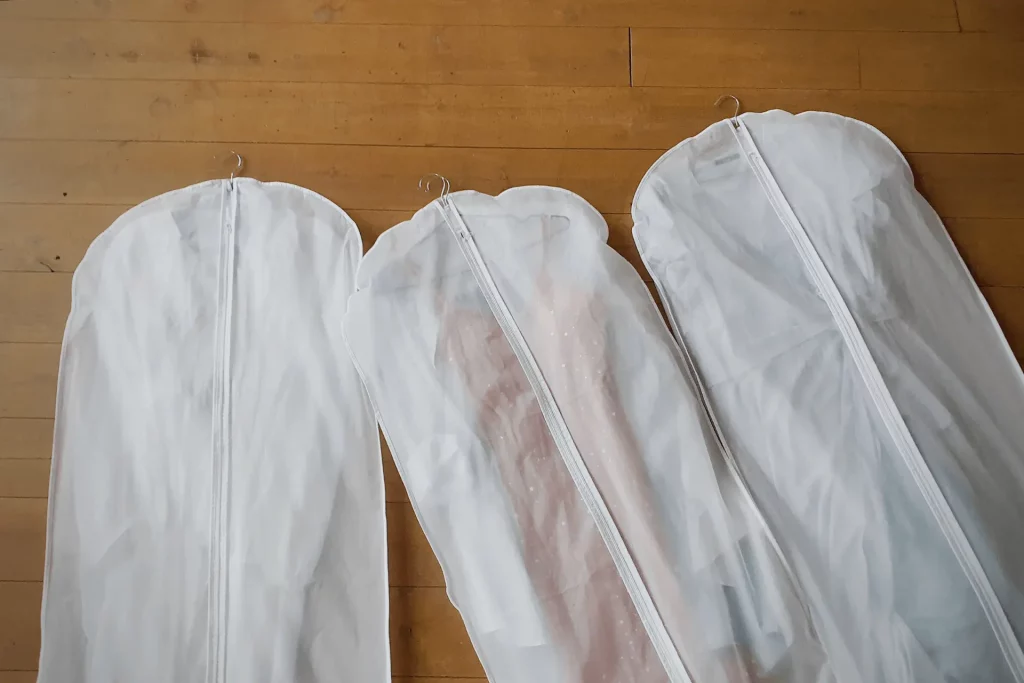Cashmere is well-liked because it is soft and warm; nonetheless, it is infamously difficult to care for and keep in good condition. When it comes to keeping your cashmere, fortunately, there are a few straightforward procedures that you can take to guarantee that it stays in pristine shape.
It doesn’t matter if you’re going to keep your cashmere for a few days, a few months, or even a few years; if you clean it after you’ve worn it, choose the right kind of storage container, and put it away in a clean and sanitized area, you’ll be able to keep the fabric fresh and intact for as long as you need it.
Table of Contents
Making Preparations for the Long-Term Storage of Cashmere:
To get specialty fabrics, like cashmere clothing, ready for their off-season nap, you need to do a lot more than wash and fold them.
Step 1: Assemble All of Your Cashmere

This may seem like a pointless initial step, but if you put your mind to finding what you’re searching for, you’ll be astonished at what you see. High-quality cashmere and other prized possessions are just as likely to be lost or borrowed and subsequently forgotten as any other item.
Even if you already have cashmere items stashed away for the long term, you should bring them all out with the rest of your cashmere so that you may begin the new season of cashmere hibernation with a clean slate. You’ll be able to see at a glance if you’ve recently made any purchases that have caused your storage space to become inadequate, as well as if there is anything you can get rid of to make more room.
Step 2: Evaluate the Cashmere Garments you Have

If you have a sizeable cashmere collection, you can find it necessary to set up a whole day for this task; nonetheless, it is essential that you examine each item. It’s possible that you haven’t seen any stains or snags on the item of clothing yet, but you should still take care of them before you wash it or even consider putting it away.
Step 3: Mend any Cashmere Clothes that have been Damaged

If the needed repairs are significant, they may require the attention of a trained seamstress; thus, if you are not already that, you should schedule some time to take care of those repairs before you wash the item. However, you do not have to wait for these to finish before you can finish preparing the remainder of your cashmere for storage.
One of the most straightforward fixes is to de-pill the clothing, which may be accomplished with relative ease with cashmere, wool comb, or fabric shaver. If you don’t have these items on hand but are simply dealing with a few errant fuzzballs, you might be able to get away with using a pair of scissors with a fine-tipped blade and keeping your hand steady.
Step 4: Remove Stains From the Cashmere

Because soaps strongly scented or extremely powerful don’t get along well with cashmere and other natural fibers like it, which need gentle detergents. When it comes to cleaning stains, this provides a bit of a dilemma, as removing stains from fabric typically requires some robust solutions to take them out of the material.
You shouldn’t use bleach or other harsh cleaners, but you may spot-treat stains on your cashmere by using lukewarm water, a small amount of your regular detergent that is appropriate for wool, and a lot of gently blotting. When in doubt, wait a few moments for the soap to penetrate the stain before blotting in fully.
Step 5: Clean

Washing each item of clothing individually is the most effective approach to prevent any stains or colors from spreading from one piece of clothing to another. Prepare yourself for a challenging exercise, but know that it will be well worth it in the long run if your collection of cashmere looks like it would be more at home in a department shop than in the closet in the hall.
If you intend to put your cashmere away for an extended period, you should thoroughly wash it beforehand and ensure it is scorched before putting it away. If you believe a soak might benefit your cashmere, you can keep it soaked for ten to thirty minutes at a time.
Step 6: Drying up

In the same way that you should never hang cashmere when it is wet or while it is being stored, you should also never ride it. When the garment is wet, the weight of the garment further stretches the strands out of shape, which is even more consistent with what we discussed previously.
When improperly handled, wet cashmere can shrink or become deformed differently, adding to the problems already caused by the additional water weight.
Before raising the cashmere or attempting to unfold it over a drying surface, you should ensure that any extra water is squeezed out of it by pressing it against the side of an empty tub or bowl.
The most effective strategy would be to sandwich the cashmere pieces between two layers of towels. From that point on, you may either wrap the cashmere into a loose spiral to get the same effect or press your fingers softly into the cashmere to pick up additional water.
Step 7: Protect

The benefits of natural moth repellants may be used in a variety of ways, even if you don’t have the space or budget for a whole cedar chest.
Cedar balls and blocks can be easily tucked into corners and only need to be refinished once a year, making them a popular choice. If you’re not a moth, the scent of lavender will also make you feel right at home in most closets.
During each season of long-term storage, replace any outdated products with brand-new versions of those same items. If at any time you realize that they have lost any of their efficacy, you may find that you need to replace them more frequently.
The layers of cashmere can also be kept distinct from one another with the use of tissue paper. This not only prevents moths from digging deeper into an item of clothing, which might result in irreversible damage, but it also protects the natural fibers of cashmere from being compressed and damaged.
Step 8: Store

Now comes the exciting part when you get to pack up all of your cashmere shawls and sweaters, but I’m guessing you won’t just leave them on a shelf by themselves without anything to shield them from the weather, would you? Regardless of how secure you believe your closet is, it is best to store your cashmere in a garment bag with ventilation and a zipper.
Because they are available in many dimensions, even the most strangely shaped closets may be outfitted with one. You could also discover combined suit coverings and shelved canvas storage, which will allow you to match the long-term storage solution for your cashmere with the solution for your formal winter attire.
Step 9: Rotate

When storing cashmere for an extended period, you’ll know when it might be time to air out your collection since learning how to do so is as much an art as a science. In most climes, it is not necessary to give your cashmere some fresh air and careful examination every single month; nevertheless, you should wait no more than three months before doing so.
After you have gained an understanding of how to store cashmere sweaters correctly and other cashmere apparel, each of these procedures will flow naturally into your typical routines for laundry cashmere items.
Keep in mind that as long as you follow these beneficial storage procedures from one year to the next, you will considerably enhance your chances of ensuring the extended life that has given cashmere its notoriety and financial success throughout the course of history.
Be confident that even if mastering the procedure could take a couple of seasons, things will only improve with practice because this is one of those skills.
The Foundational Principles of Storing Cashmere Garments:
Hang vs. Fold?
Think of this as an issue that has been resolved rather than one that is being actively debated. When storing your cashmere items, folding them is always, without fail, the superior option to overhanging them.
There is no doubt that these natural fibers have a long lifespan. On the other hand, natural fibers might become highly susceptible to harm if the right circumstances aren’t met.
No matter how lightly cashmere drapes compared to other wool textiles, the weight of cashmere itself creates enough stress to stretch the connections between each strand of yarn, leading to the tale becoming untied. Additionally, reshaping such clothing is not usually a simple process.
Summer vs. Winter?

Although winter clothes made of cashmere are more commonly associated with the material than summer clothes made of cashmere, you can still discover cashmere pieces that are both comfortable and suitable for use throughout the year. However, the majority of individuals undoubtedly have more cashmere appropriate for cold weather than they have for other seasons.
The method you use to store your cashmere while you are still likely to use it more than once a month calls for a different strategy than the one you keep for the long term.
Although it may go against common sense, cashmere shouldn’t be washed each time it’s worn. If you use the item of clothing for a few hours at a time here and there, you can get away with not washing it as frequently as you would otherwise.
Why Does It Matter to Store Cashmere in the Correct Manner?
It is common sense to take care of the things you own, regardless of how much they cost; yet, there is much more to the laws of storage for cashmere than just having good manners and being neat and orderly.
Longer Lifespan:
When cashmere is stored correctly, the natural fibers in the cashmere will retain their suppleness and radiance for years, if not decades, depending on their care level. Even centuries, although museum curators would probably have a fit if somebody went out for the night wearing cashmere that was more than a hundred years old.
No item of excellent cashmere should be expected to last less than a lifetime of usage on your part, and ancient pieces should be carefully conserved rather than worn in the winter or stowed in the closet during the summer. That is, provided that you continue to use the most effective storage methods during those years.
Protection of Cashmere against Rodents:
If you can identify an infestation in its early stages, there is a greater chance that you will be able to save your cashmere from being consumed by moth larvae in the nursery.
Utilize see-through plastic windows integrated into zip lock bags and suit covers made of a breathable cotton canvas material. This will allow you to inspect the bag’s contents without having to open and close it constantly.
Damage Control:
It’s not just clothes moths that may be hiding in the shadows of a poorly maintained storage room; other things could be there, too. Suppose you haven’t investigated that particular area of your closet before storing your cashmere. In that case, you risk it becoming a breeding ground for bacteria, fungi, and maybe even the subsequent great scientific discovery.
And this doesn’t even consider the potential problems that may arise with the clothing themselves! Making sure that the goods you keep are spotless before putting them away is an essential component of practical storage.
However, certain stains caused by natural body oils and sweat won’t become visible until the individual fibers of the clothing loosen and allow them to escape. When left unchecked, these have the potential to entice moths or weaken the links between the fibers, which can lead to fraying, pills, or seams that unravel.
Frequently Asked Questions:
In what manner should cashmere be kept at home?
Cashmere should be stored flat in a drawer or on a shelf because it is a fragile fabric. Hanging cashmere can damage the strands beyond repair. Avoid keeping your cashmere in plastic baggies, which can trap moisture and heat and cause mold and mildew to grow, and instead, keep it in a cold, dry spot.
Can you fix holes in cashmere?
Holes in cashmere are not easily fixed, but it is possible to do so with care. First, cut away any loose or frayed fibers around the hole. Next, use a needle and thread to darn the gap by working your stitches in a tight, spiral pattern. Finally, trim any excess cord and gently brush the area to restore the cashmere’s nap. With proper care, your cashmere garment should last for many years.
Can you iron cashmere?
You can iron cashmere, but there are a few things to remember. First, use a lower temperature than you would for other fabrics; anything above Wool/Silk should be too hot and damage the fibers. You should also use a press cloth or thin cotton towel over the cashmere to protect it from direct contact with the iron. Finally, don’t forget to turn the garment inside before ironing; this will help preserve the fabric’s natural luster. With these tips in mind, enjoy your freshly pressed cashmere!
Bottom Line:
Now that you know how to store cashmere be sure to take extra care of your garments. Cashmere is a delicate fabric and should be treated as such. With proper care, your cashmere clothing will last for many years.

